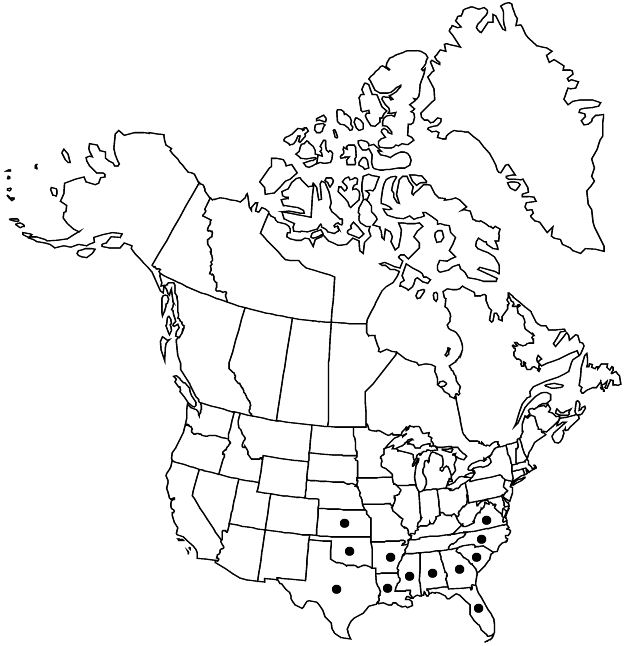Sida rhombifolia
Sp. Pl. 2: 684. 1753.
Subshrubs, 1 m. Stems erect, stellate-puberulent, hairs to 0.1 mm. Leaves: stipules free from petiole, 1-veined, subulate, 5–6 mm, subequal to petiole; petiole 5–7 mm, 1/10–1/4 length of blade, stellate-puberulent; blade ± rhombic, 2.5–9 cm, smaller distally, 2–3(–4) times longer than wide, base usually cuneate, sometimes somewhat truncate to subcordate, margins serrate distally, entire basally, apex acute to subobtuse, surfaces stellate-puberulent or glabrescent adaxially. Inflorescences axillary solitary flowers. Pedicels slender, (1–)3–4 cm, 4–6 times length of calyx, much shorter than to ± equaling subtending leaf, at least distalmost. Flowers: calyx ribbed, 5–6 mm, puberulent, lobes ovate; petals yellow, 7–9 mm; staminal column hairy; style 10–14-branched. Schizocarps subconic, 4–5 mm diam., glabrous; mericarps 10–14, 3–4 mm, laterally reticulate, apex muticous to spined, sometimes 1-spined through failure of dehiscence, glabrous. 2n = 14, 28.
Phenology: Flowering year-round in warmer localities.
Habitat: Disturbed sites, roadsides, pastures, urban areas
Elevation: 0–1500 m
Distribution

Introduced; Ala., Ark., Fla., Ga., Kans., La., Miss., N.C., Okla., S.C., Tex., Va., s Asia (China), introduced also in Mexico, West Indies, Central America, South America, tropical Africa, Pacific Islands (Philippines, Polynesia), Australia.
Discussion
Sida rhombifolia is found occasionally on ballast in New Jersey and Pennsylvania. It is a common weed in warm-temperate, subtropical, and tropical areas; its genetic diversity seems to indicate that it was introduced from the Old World. The species has been cultivated for medicinal and cordage use.
Selected References
None.